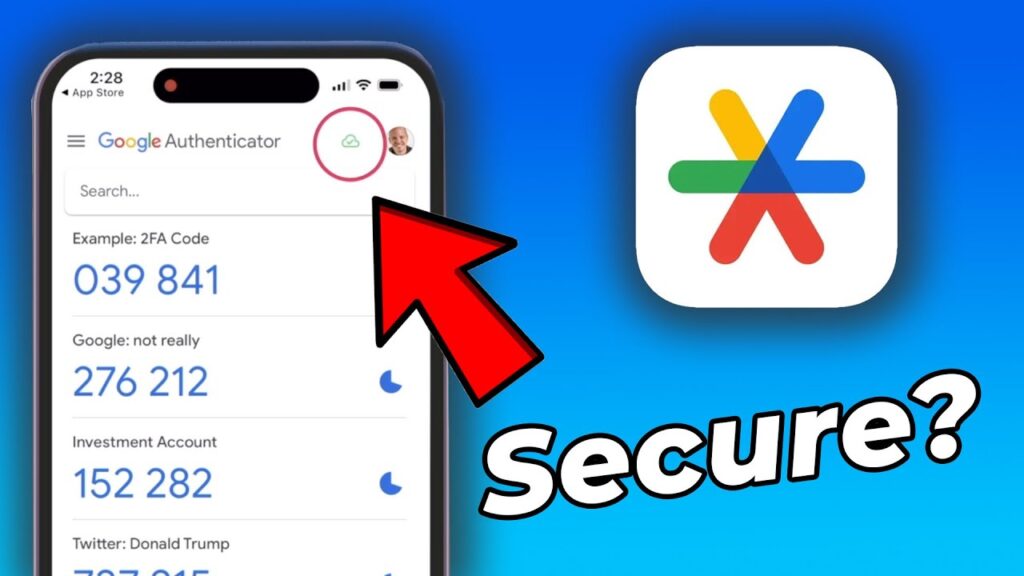Google Authenticator is a tool for adding extra security to your online accounts.
You set up the app on your phone to generate unique codes for verifying your identity when logging in.
It helps protect your sensitive information from unauthorized access.
Let’s explore how to use Google Authenticator to enhance security and keep your data safe from hackers.
Let’s get started!
Setting Up Google Authenticator
Download the App
Enhance your online security by downloading an authenticator app. This tool provides a two-factor authentication method to keep your data safe. Simply scan the QR code to set it up and generate unique passkeys for your accounts. You’ll need these passkeys, along with your password, to sign in securely.
The app allows you to manage multiple accounts conveniently and back up your data for peace of mind. With features like screen lock and fingerprint protection, your personal information remains secure. Take the next step in protecting your accounts by downloading this app today. Safeguard your privacy practices and keep your online presence safe from cyber threats.
Linking Your Accounts
Linking accounts to the authenticator app is a great way to boost security. Enabling two-factor authentication adds an extra layer of protection.
By securely syncing multiple accounts with the app, users can generate time-based one-time passcodes (TOTP) or counter-based codes. This helps in enhancing security.
It’s also important to have a process for transferring linked accounts to new devices. This ensures continued access without compromising security.
Using a strong password manager and enabling two-step verification are additional ways to improve privacy practices.
Cloud backup and account recovery options can also help protect personal information from potential threats.
Implementing features like fingerprint or screen lock on mobile apps can further strengthen the security of linked accounts.
Using Google Authenticator for Sign In
Generating Codes
Codes can be generated using Google Authenticator by setting up two-factor authentication on various online accounts like Google, Microsoft, and others.
Users can link their accounts with the authenticator app. This app generates unique passkeys or one-time codes (OTPs) every few seconds for added security.
To enhance security, it’s recommended to enable screen lock, fingerprint protection, or a PIN for the app itself to keep the passkeys secure.
Users can back up their secrets by transferring them to a new device, setting up a cloud backup like Dropbox, or syncing with a password manager.
It’s also advisable to use strong, unique passwords for the accounts. Be cautious when signing in on a browser or extension.
Following good privacy practices and using two-step verification on multiple accounts ensures personal information is protected from cybersecurity threats.

Entering Codes
When setting up Google Authenticator for two-factor authentication, users first connect their online accounts to the app by scanning a QR code. Then, they enter the OTP or passkey to establish the link.
After linking, Google Authenticator generates time-based codes for additional security. These codes change constantly and must be entered along with the password during login for the two-step verification.
For extra security, users can back up their secrets securely. They can use cloud backup services such as Dropbox or a mobile app with a personal vault.
Enhance security by enabling features like screen lock, fingerprint authentication, and password managers when using Google Authenticator.
Tips for Enhanced Security
Keep Your Google Authenticator App Private
To keep your Google Authenticator app private and secure, users can take several steps.
Firstly, they should enable a screen lock on their Android device to prevent unauthorized access to the app itself.
Additionally, utilizing a fingerprint or PIN for added security is recommended.
It’s important to backup their passkeys and secrets securely. This can be done using a cloud backup service like Dropbox or a password manager.
Users should also be cautious of online accounts that may not have strong privacy practices and avoid sharing their codes or tokens with anyone.
By practicing good security habits, such as setting up two-step verification for their Google Account, users can ensure that their personal information and accounts are protected from cybersecurity threats.
Remember, the safety of the Google Authenticator app is crucial to safeguard sensitive data and prevent unauthorized access to accounts.
Beware of Phishing Attempts
Signs of a phishing attempt:
- Unsolicited emails asking for personal information.
- Directed to fake websites mimicking real ones.
Avoid falling victim by:
- Verify the sender’s email address.
- Avoid clicking on suspicious links.
- Never provide sensitive information online.
Using Google Authenticator:
- Set up two-factor authentication.
- Generate unique one-time passkeys.
- Safeguard secrets and TOTP codes.
Educating about phishing:
- Stay informed on scams.
- Secure password practices.
- Use two-factor authentication.
These steps enhance online security and prevent unauthorized access to personal information.
Backing Up Google Authenticator
Recovering Codes
Users can easily recover their Google Authenticator codes. They should set up backup options like enabling cloud backup or using third-party password managers such as Microsoft LastPass or 1Password for cloud synchronization.
Syncing Google Authenticator data with these services allows users to quickly recover their codes if they lose their device. To securely back up codes, users should not take screenshots and store them on their devices.
Instead, they can use the built-in QR creator feature to transfer their account secrets to a new device. Generating a QR code and scanning it with the new device ensures secure backup of codes.
Furthermore, users should enable screen lock, fingerprint authentication, or PIN protection on their devices to prevent unauthorized access to the Google Authenticator app.
Following these steps enhances online account security and protects personal information from potential cyber threats.
Setting Up New Devices
Transferring Google Authenticator
When transferring Google Authenticator to a new device:
- Install the authenticator app on the new device.
- Log in to your Google account on the new device and set up two-factor authentication.
- Open the Google Authenticator app on both devices and select the option to transfer accounts.
- Follow the on-screen instructions provided by the app carefully.
- Double-check the passkeys or secrets to ensure they are correctly transferred.
- Back up the QR codes or backup codes for each account before transferring Google Authenticator.
- Sync the authenticator app with a cloud backup service like Dropbox or use a password manager with cloud backup.
By following these steps and precautions, users can securely transfer Google Authenticator codes to a new device without the risk of losing access to their online accounts.
Conclusion
Google Authenticator is a helpful tool for making online accounts more secure.
Here’s how to set it up:
- Download the app from the App Store or Google Play Store.
- Follow the instructions to link your accounts by scanning a QR code.
- Every time you log in, enter a unique code generated by the app for added account protection.




